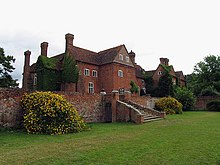
Wokingham is a market town and civil parish in Berkshire, England, 37 miles (60 km) west of London, 7 miles (11 km) southeast of Reading, 8 miles (13 km) north of Camberley and 4 miles (6 km) west of Bracknell. It is the main administrative centre of the wider Borough of Wokingham.
Sir John Davies was an English poet, lawyer, and politician who sat in the House of Commons at various times between 1597 and 1621. He became Attorney General for Ireland and formulated many of the legal principles that underpinned the British Empire.
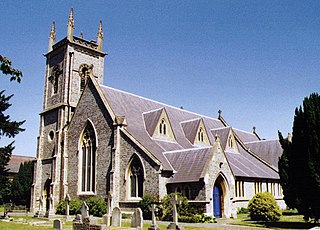
Earley is a town and civil parish in the Borough of Wokingham, Berkshire, England. Along with the neighbouring town of Woodley, the Office for National Statistics places Earley within the Reading/Wokingham Urban Area; for the purposes of local government it falls within the Borough of Wokingham, outside the area of Reading Borough Council. Its name is sometimes spelt Erleigh or Erlegh and consists of a number of smaller areas, including Maiden Erlegh and Lower Earley, and lies some 3 miles (5 km) south and east of the centre of Reading, and some 4 miles (6 km) northwest of Wokingham. It had a population of 32,036 at the 2011 Census.
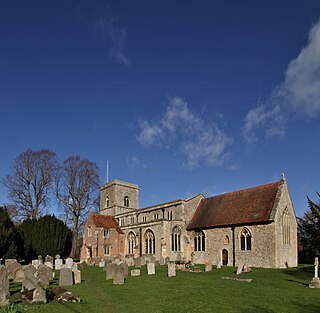
Sutton Courtenay is a village and civil parish on the River Thames 2 miles (3 km) south of Abingdon-on-Thames and 3 miles (5 km) northwest of Didcot. Historically part of Berkshire, it has been administered as part of Oxfordshire since the 1974 boundary changes. The 2011 census recorded the parish's population as 2,421. Sutton Courtenay is home to some important structures, such as The Abbey, the Manor House, All Saints' Church, a twelfth-century Norman hall, the Sutton Bridge, and Didcot power station.

Arborfield is a village and former civil parish, now in the parish of Arborfield and Newland, in the Borough of Wokingham, on the A327 road in Berkshire, England. It is about 4.5 miles (7 km) south-east of Reading, about 4 miles (6.4 km) west of Wokingham. It lies about 0.6 miles (1 km) west of its sister village of Arborfield Cross and the two villages have become collectively known as Arborfield, with no signs marking their boundary. Arborfield is a dormitory village in the Reading built-up area. In 1931 the parish had a population of 348. On 1 April 1948 the parish was abolished and merged with Newland to form "Arborfield and Newland".

Aldermaston Court is a country house and private park built in the Victorian era for Daniel Higford Davall Burr with incorporations from a Stuart house. It is south-east of the village nucleus of Aldermaston in the English county of Berkshire. The predecessor manor house became a mansion from the wealth of its land and from assistance to Charles I during the English Civil War under ownership of the Forster baronets of Aldermaston after which the estate has alternated between the names Aldermaston Park and Aldermaston Manor.

Ufton Nervet is a village and civil parish in West Berkshire, England centred 6 miles (10 km) west southwest of the large town of Reading and 7 miles east of Thatcham. Ufton Nervet has an elected civil parish council.

Finchampstead is a village and civil parish in the Wokingham Borough in the shire of Berkshire, England. Its northern extremity is 2 miles (3 km) south of Wokingham, 5 miles (8 km) west of Bracknell, 8 miles (13 km) south-east of Reading, and 34 miles (55 km) west of Central London. It is an affluent area, with the village ranking as Britain's 31st wealthiest. It has a high standard of living and is rated as one of the most desirable places to live in the United Kingdom.

Three Mile Cross is a village in the civil parish of Shinfield, to the south of Reading, and immediately north of the adjoining village of Spencers Wood, in the English county of Berkshire. In the 1960s, the M4 Motorway was built and became an artificial barrier between the village and Reading. In the 1980s, the A33 Swallowfield Bypass severed roads to the village of Grazeley lying to the west.

Shinfield is a village and civil parish in the English county of Berkshire, just south of Reading. It contains 4,313 acres (17.45 km2) and is administered by the unitary authority of Wokingham District. Shinfield Park is the northern part of the parish, becoming physically separated from Reading when the M4 motorway was constructed in 1971.

Englefield House is an Elizabethan country house with surrounding estate at Englefield in the English county of Berkshire. The gardens are open to the public all year round on particular weekdays and the house by appointment only for large groups.
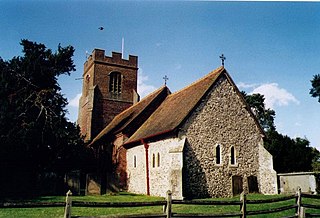
Ruscombe is a village and civil parish, east of Twyford in the Borough of Wokingham in Berkshire, England.
Sir John Norreys or Norris was a gentleman usher daily waiter at the English court during the reign of the House of Tudor. He is thought to be the author of a treatise describing the roles of servants of the chamber.
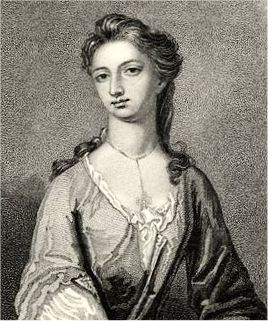
Arabella Fermor (1696–1737) was the daughter of a marriage between two recusant Roman Catholic families in Protestant England, the Fermors of Oxfordshire and the Brownes of Berkshire. The family seat was Tusmore House, noted for its formal gardens.
Robert Petre, 7th Baron Petre was a British peer, the son of Thomas Petre, 6th Baron Petre (1633–1706) and his wife Mary Clifton, daughter of Sir Thomas Clifton. He succeeded to his title, at the age of 17, upon the death of his father.

Popeswood is a village in Berkshire, England, near Bracknell. The village is within the civil parish of Binfield approximately 1.5 miles (2.4 km) west of Bracknell. The main part of Popeswood lies north of the B3408 west of Temple Park and south of Binfield village, with a smaller section south of the B3408 between Amen Corner and Farley Wood.

Somerton is a village and civil parish in Oxfordshire, England, in the Cherwell valley about 6 miles (10 km) northwest of Bicester. The 2011 Census recorded the parish's population as 305.
The Perkins family of Ufton Nervet in the English county of Berkshire were a prominent Roman Catholic family in Protestant England. From 1581 until 1769, a span covering seven generations of the Perkins family, they lived at Ufton Court in the parish.
William Perkins or Parkyns (c.1400-c.1449) was an English landowner and Member of Parliament.

